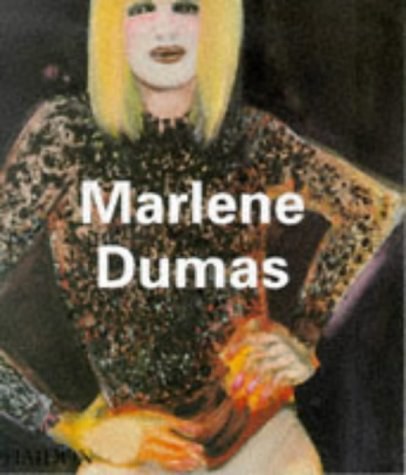
Gertrud Koch《Siegfried Kracauer》
书刊介绍
Siegfried Kracauer has been misunderstood as a naïve realist, appreciated as an astute critic of early German film, and noticed as the interesting exile who exchanged letters with Erwin Panofsky. But he is most widely thought of as the odd uncle of famed Frankfurt School critical theorists Jürgen Habermas, Theodor Adorno, Walter Benjamin, and Max Horkheimer. Recently, however, scholars have rediscovered in Kracauer's writings a philosopher, sociologist, and film theorist important beyond his associations--and perhaps one of the most significant cultural critics of the twentieth century. Gertrud Koch advances this Kracauer renaissance with the first-ever critical assessment of his entire body of work.
Koch's analysis, which is concise without sacrificing thoroughness or sophistication, covers both Kracauer's best-known publications (e.g., From Caligari to Hitler, in which he gleans the roots of National Socialism in the films of the Weimar Republic) and previously underexamined texts, including two newly discovered autobiographical novels. Because Kracauer's wide-ranging works emerge from no rigidly unified approach, instead always remaining open to unusual and highly individual perspectives, Koch resists the temptation to force generalization. She does, however, identify recurring tropes in Kracauer's lifetime effort to perceive the basic posture and composition of particular cultures through their visual surfaces. Koch also finds in Kracauer a surprisingly contemporary cultural commentator, whose ideas speak directly to current discussions on film, urban modernity, feminism, cultural representation, violence, and other themes.
This book was long-awaited in Germany, as well as widely and well reviewed. Now translated into English for the first time, it will fuel already growing interest in the United States, where Kracauer lived and wrote from 1941 until his death in 1966. It will attract the attention of students and scholars working in Film Studies, German Studies, Comparative Literature, Critical Theory, Cultural Studies, Philosophy, and History.
作品目录
Preface vii
Time Line of Kracauer's Life ix
CHAPTER 1 The Early Days: A Biographical Sketch 3
CHAPTER 2 The Early Phenomenology of Modernity and Mass Culture:
Of Hotel Lobbies and Detective Novels 11
CHAPTER 3 Surface and Self-Representation: "The Mass Ornament" and Die Angestellten 26
CHAPTER 4 Autobiography and Social Biography: Ginster, Georg, and Offenbach 48
CHAPTER 5 Continuity and Mentality: "From Caligari to Hitler" 75
CHAPTER 6 Space, Time, and Apparatus: The Optical Medium "Theory of Film" 95
CHAPTER 7 At the End: A Philosophy of History and Historiography 114
Notes 121
Bibliography 131
Index 133
相关推荐
-

无穷的开始
《无穷的开始》内容简介:本书是一次大胆的、包罗万象的智力探险。戴维·多伊奇是《真实世界的脉络》一书广受好评的作者,他探索那
-

中国美学(第3辑)
《中国美学(第3辑)》内容简介:《中国美学》是由首都师范大学“中国美学研究中心”主办的学术期刊,内容以研究中国美学包括古代和
-

笛卡尔(中文版)
《笛卡尔(中文版)》内容简介:笛卡尔因“我思故我在”之说闻名于世,他从“我思”的原则出发,借助“直觉”和“演绎”,推导出物
-

爸爸爱喜禾
《爸爸爱喜禾》内容简介:当蔡春猪把《给儿子的一封信》贴到博客里,几乎是在一夜之间,这封信被浏览数十万次,被感动转发及评论数
-

谶纬与文学研究
《谶纬与文学研究》内容简介:谶纬是兴盛于汉代、流行于魏晋南北朝时期的一种学术思潮,它对汉魏六朝时期的社会政治和思想文化等各
-
![[美] 林南《社会资本》](http://oss.shudanhao.com/caiji/chazidian/2023/38678.jpg)
[美] 林南《社会资本》
林南,现任杜克大学社会学教授、亚太研究所所长,前美国社会学会副会长(1999-2000),台湾中研院院士,中国人民大学荣誉教授,华
-

心灵管理
《心灵管理》内容简介:缔造两家世界五百强企业,2010年成功拯救即将破产的日航,创造了航空界一大奇迹的知名企业家稻盛和夫先生,
-

娱乐何为
《娱乐何为》内容简介:现在,娱乐的无处不在预示着全新的事物即将来临。人们对世界和现实的理解开始发生根本性的变化。今天,娱乐
-

风暴中的哲学家
伊丽莎白•卢迪奈斯科(Élisabeth Roudinesco , 1944- ),法国历史学家、精神分析学家。雅克•拉康和西蒙德•弗洛伊德的传记作者,著有《法...
-

叔本华及哲学的狂野年代
作品目录前言第一部第一章第二章第三章第四章第五章第六章第七章第八章第九章第十章第二部分引用文献缩略语凡例年表· · · ·
-
![[美] 罗伯特·保罗·沃尔夫《哲学概论》](http://oss.shudanhao.com/caiji/chazidian/2023/40149.jpg)
[美] 罗伯特·保罗·沃尔夫《哲学概论》
本书除了对哲学各领域的相关理化作了相关的介绍外,每章后面都附了与各哲学分支领域相关的“当前热门话题”通过这些与当前社会脉
-

罗素哲学三书
《罗素哲学三书》内容简介:生活中有不少问题,我们会很自然地从经验出发给出答案。从某种意义上说,知识无疑由此而来。但是,日常
-

《轻松学会独立思考》书籍《轻松学会独立思考》
你是否曾为一些事情纠结,却找不到解决的办法?你是否受制于别人的影响,却没有自己的判断?你是否质疑过一些信息,却不知道如何
-

中国民主决策模式:以五年规划制定为例
《中国民主决策模式:以五年规划制定为例》内容简介:本书以中国五年规划编制为例,剖析了中国中央政府如何制定重大公共政策,概括
-

赵鑫珊《庄子的哲学空筐》
《庄子的哲学空筐》主要内容包括通过庄子,看当代世界——“文本”的解释学、知天之所为,知人之所为,至矣、吾生也有涯,而知也
-
![[希腊] 色诺芬《回忆苏格拉底》](http://oss.shudanhao.com/caiji/chazidian/2023/40396.jpg)
[希腊] 色诺芬《回忆苏格拉底》
本书作者色诺芬是苏格拉底的弟子,他回忆了苏格拉底一生的言行,着重追述了苏格拉底对政治、宗教和道德等问题的看法。苏格拉底是
-
![[美] 许烺光《祖蔭下》](http://oss.shudanhao.com/caiji/chazidian/2023/38843.jpg)
[美] 许烺光《祖蔭下》
由华裔人类学家许烺光撰写的《祖荫下》出版后在西方学术界引起了巨大的反响,书中以西镇“民家人”的家与亲属制度作为代表,分析整
-

生力军的进击
《生力军的进击》内容简介:民营企业是参与“一带一路”建设的生力军,本书通过解读“一带一路”建设有关政策,阐述了“一带一路”
-

肥肉(增订版)
《肥肉(增订版)》内容简介:《肥肉》是一本以“肥肉”为话题的散文集,由“世界最美的书”获奖者朱赢椿历时六年约稿,精心编辑与
-

艺术哲学
王德峰,男,1956年生,江苏泰县人。哲学博士,复旦大学哲学学院教授、博士生导师,复旦大学哲学系美学教研室主任,兼任复旦大学当代国外马克思主义研究中心研究员。主...





